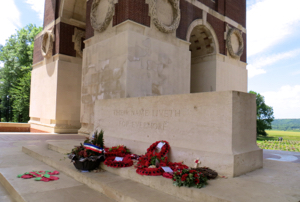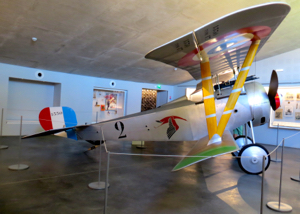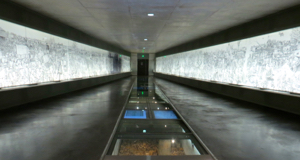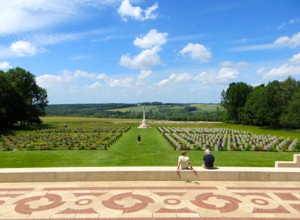 |
Thiepval Memorial & Museum, France | |
| The British Memorial to the missing has recently added a museum to the site. | ||
|
|
|
World War I was a long and bloody war that resulted in huge numbers of casualties. The Battle of the Somme, fought in this area of France, was one of the worst. Located 36 kilometers (22 miles) northeast of Amiens and just 8 kilometers (5 miles) from Albert, the Thiepval Memorial is near the village of Authuille in the Somme area (map). The Thiepval Memorial honors 72,243 officers and men from the United Kingdom and South Africa, who died in the Somme area between July 1, 1916 and March 20, 1918 and who have no known grave. It is estimated that over 65,000 of those memorialized here died in the five month period of July-November 1916. 12,000 were killed on the first day alone.
And these numbers, as horrifying as they are, don't tell the whole story. The British Army had over 400,000 casualties during the Battle of the Somme, while the French lost about 200,000 men. The memorial is also considered an Anglo-French Battle Memorial that recognizes the joint nature of the 1916 Battle of the Somme. The memorial was designed by Sir Edwin Lutyens and was inaugurated by the Prince of Wales, with the President of France, on August 1, 1932. Lutyens also designed many British War Cemeteries and the Australian National Memorial at Villers-Bretonneux. Although there had been a small museum at the Thiepval Visitor and Interpretation Centre since 2004, a new museum was opened in 2016, in honor of the 100th anniversary of the Battle of the Somme. The main hall is a long narrow room that follows the progress of the battles over time through a 60 meter (almost 200 feet) mural. In the center of the room are displays of artifacts from the area. Exhibits focus on the battles of the Somme and personal memories of the soldiers who fought and died there. A combination of personal memorabilia and high-tech installations give a vivid picture of the battles and life in the trenches. Maps, films, archaeological finds from the battlefields, and photographs allow the visitor to walk through hour by hour, day by day. Individual stories of soldiers provide personal accounts of the battles and the suffering. There is a replica of the plane flown by Georges Guynemer, a famous French flying ace who was reported as missing in action in 1917, after more than 50 successful combat missions. While his name may not be well known, the Red Baron is, and a displayis devoted to him, aka Manfred Albrecht Freiherr von Richthofen. Credited with many combat victories, in 1918 von Richthofen was shot down in the area of the Somme. After visiting the museum, stroll along the lovely pathway to the Memorial itself. Stop to read the names of some of the 72,243 individuals memorialized there. Notice the memorial wreaths of red poppies (coquelicots). At the far side of the monument is a lovely view of the surrounding area. But it's also a view of the cemetery of French and Commonwealth soldiers who died here. There are books listing the names and information of those memorialized here, for those looking for specific individuals or groups, and a large data base of information. The Thiepval Memorial is a sobering reminder of the costs of war, and an enduring monument to French and British cooperation. Like the Somme 1916 Museum in Albert, the Thiepval Museum shows the visitor both a broad picture of the battle and a more personal picture of some of the individuals who fought and died there. Another important British site is that of Lochnagar Crater, where the largest mine explosion of the war (at that time) created a huge crater that remains today. Like those memorialized at Thiepval, most of the casualties from Lochnagar have no known grave. Just 6.5 kilometers (4 miles) south of Thiepval, they can be easily visited on the same trip (map). And, just 5 kilometers (3 miles) from Thiepval is the Ulster Memorial Tower, an Irish war memorial.
|
|
Above, Memorial poppy wreaths, beneath an inscription that reads, Their Name Liveth for Evermore.
|





